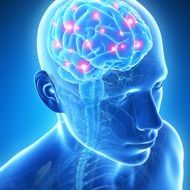Achieving mindfulness through meditation has helped people maintain a healthy mind by quelling negative emotions and thoughts, such as desire, anger and anxiety, and encouraging more positive dispositions such as compassion, empathy and forgiveness. Those who have reaped the benefits of mindfulness know that it works. But how exactly does it work?
There is a measurable benefit that people could achieve through body-mind meditation, especially involving an effective training regimen.
Researchers at Brigham and Women’s Hospital (BWH) have proposed a new model that shifts how we think about mindfulness. Rather than describing mindfulness as a single dimension of cognition, the researchers demonstrate that mindfulness actually involves a broad framework of complex mechanisms in the brain.
The researchers identified several cognitive functions that are active in the brain during mindfulness practice. These cognitive functions help a person develop self-awareness, self-regulation, and self-transcendence (S-ART) which make up the transformative framework for the mindfulness process.
The S-ART framework explains the underlying neurobiological mechanisms by which mindfulness can facilitate self-awareness; reduce biases and negative thoughts; enhance the ability to regulate one’s behavior; and increase positive, pro-social relationships with oneself and others-all-in-all creating a sustainable healthy mind.
The researchers highlight six neuropsychological processes that are active mechanisms in the brain during mindfulness and which support S-ART. These processes include 1) intention and motivation, 2) attention regulation, 3) emotion regulation, 4) extinction and reconsolidation, 5) pro-social behavior, and 6) non-attachment and de-centering.
In other words, these processes begin with an intention and motivation to want to attain mindfulness, followed by an awareness of one’s bad habits. Once these are set, a person can begin taming him or herself to be less emotionally reactive and to recover faster from upsetting emotions.
